Analysis of mitochondrial DNA alteration in new phenotype ACOS
- PMID: 26867569
- PMCID: PMC4751730
- DOI: 10.1186/s12890-016-0192-6
Analysis of mitochondrial DNA alteration in new phenotype ACOS
Abstract
Background: Mitochondria contain their own DNA (MtDNA) that is very sensitive to oxidative stress and as a consequence could be damaged in quantity. Oxidative stress is largely recognized to play a key role in the pathogenesis of asthma and COPD and might have a role in the new intermediate phenotype ACOS (asthma-COPD overlap syndrome). The aim of this study was to investigate MtDNA alterations, as an expression of mitochondrial dysfunction, in ACOS and to verify whether they might help in the identification of this new phenotype and in its differentiation from asthma and COPD.
Methods: Ten (10) ACOS according to Spanish guidelines, 13 ACOS according to GINA guidelines, 13 COPD, 14 asthmatic patients and ten normal subjects were enrolled. They further underwent a blood, induced sputum and exhaled nitric oxide collection. Content of MtDNA and nuclear DNA (nDNA) were measured in the blood cells of patients by Real Time PCR.
Results: ACOS patients showed an increase of MtDNA/nDNA ratio. Dividing ACOS according to guidelines, those from the Spanish showed a higher value of MtDNA/nDNA compared to those from GINA/GOLD (92.69 ± 7.31 vs 80.68 ± 4.16). Spanish ACOS presented MtDNA/nDNA ratio closer to COPD than asthma. MtDNA was higher in asthmatic, COPD, GINA and Spanish ACOS patients compared to healthy subjects (73.30 ± 4.47-137.0 ± 19.45-80.68 ± 4.16-92.69 ± 7.31 vs 65.97 ± 20.56).
Conclusion: We found an increase of MtDNA/nDNA ratio in ACOS subjects that led us to conclude that there is presence of mitochondrial dysfunction in this disease, that makes it closer to COPD than to asthma. Although the MtDNA/nDNA ratio results are a useful marker for differential diagnosis from asthma, COPD and ACOS, further studies are needed to confirm the potentiality of MtDNA/nDNA ratio and to a better characterization of ACOS.
Figures
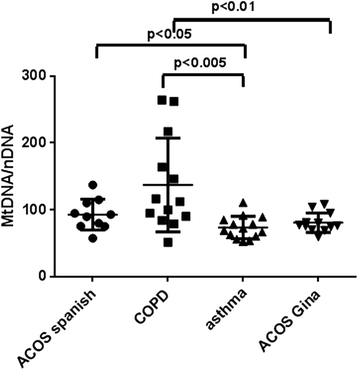
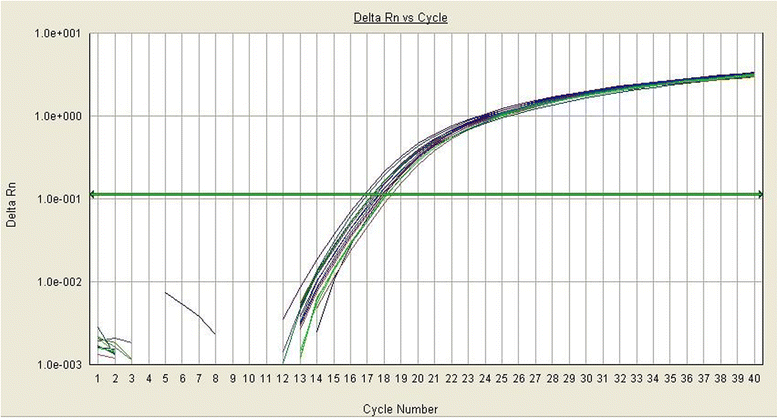
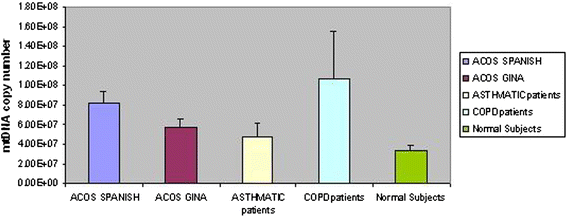
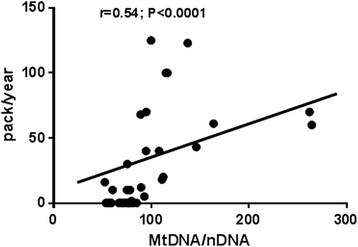
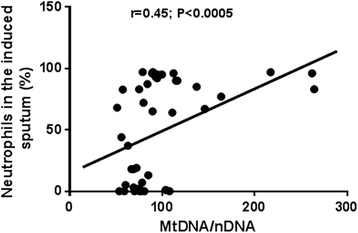
References
-
- Wojtczak L, Zabłocki K. Mitochondria in cell life, death and disease. Postepy Biochem. 2008;54(2):129–41. - PubMed
MeSH terms
Substances
LinkOut - more resources
Full Text Sources
Other Literature Sources
Medical

